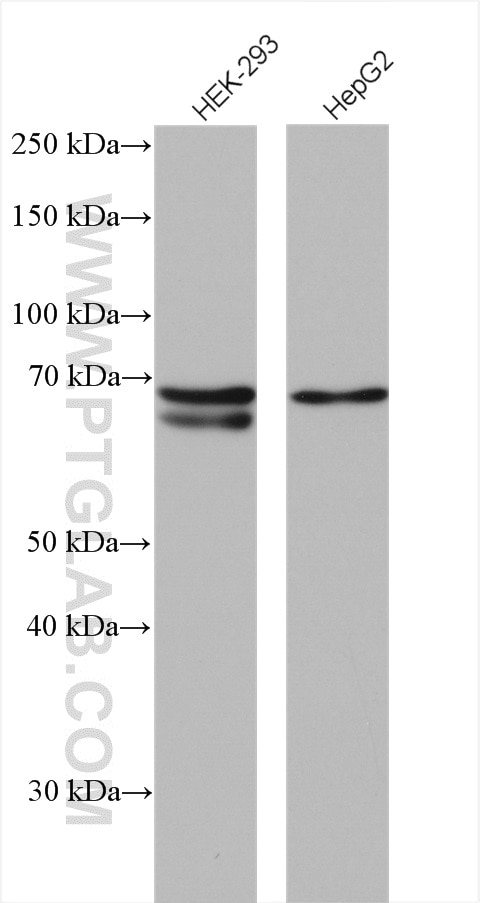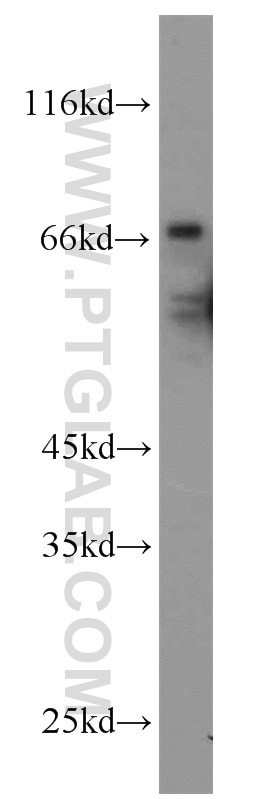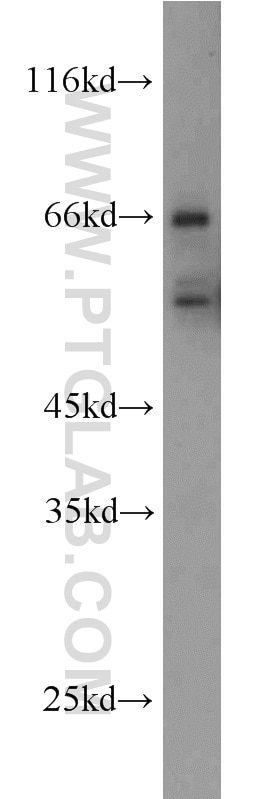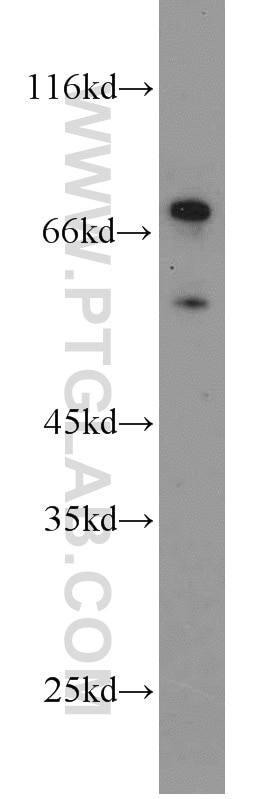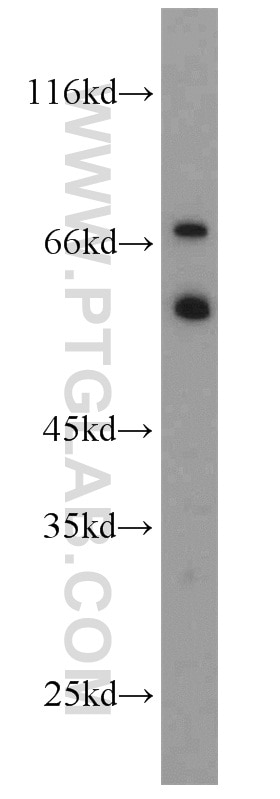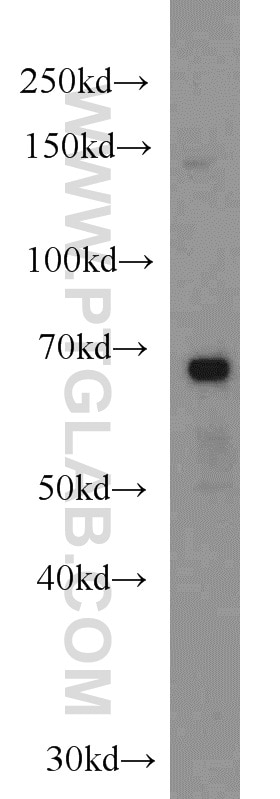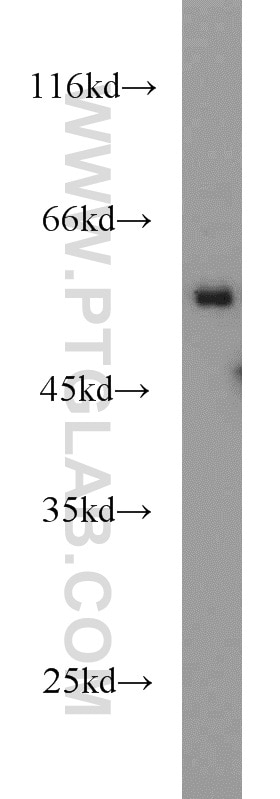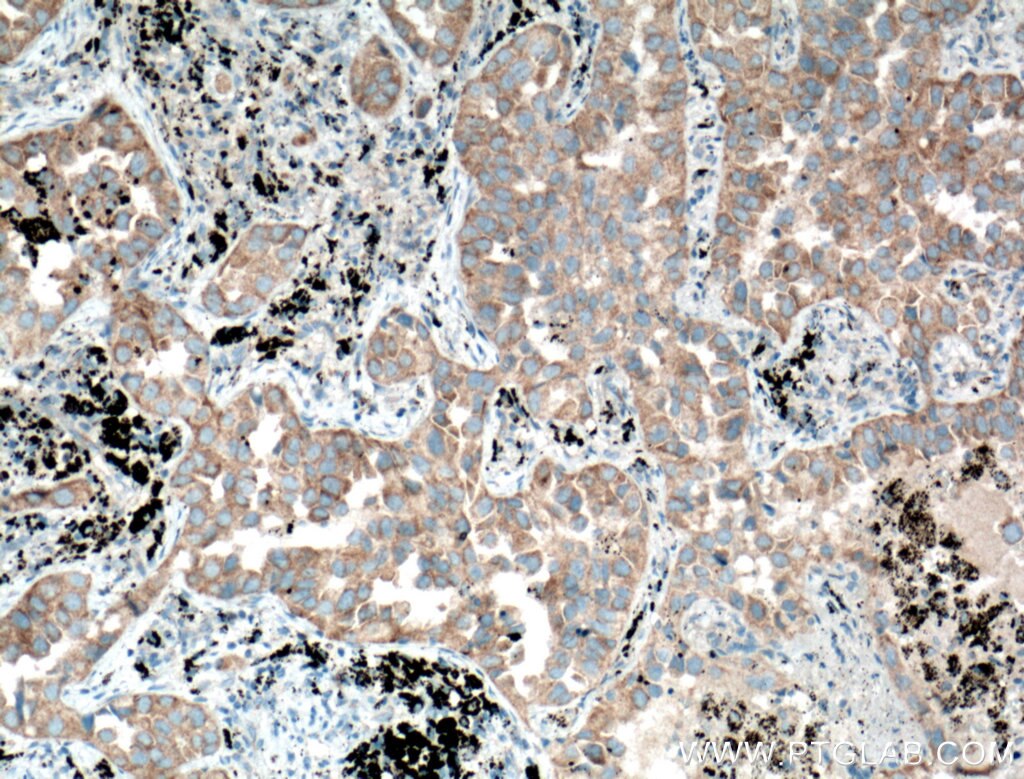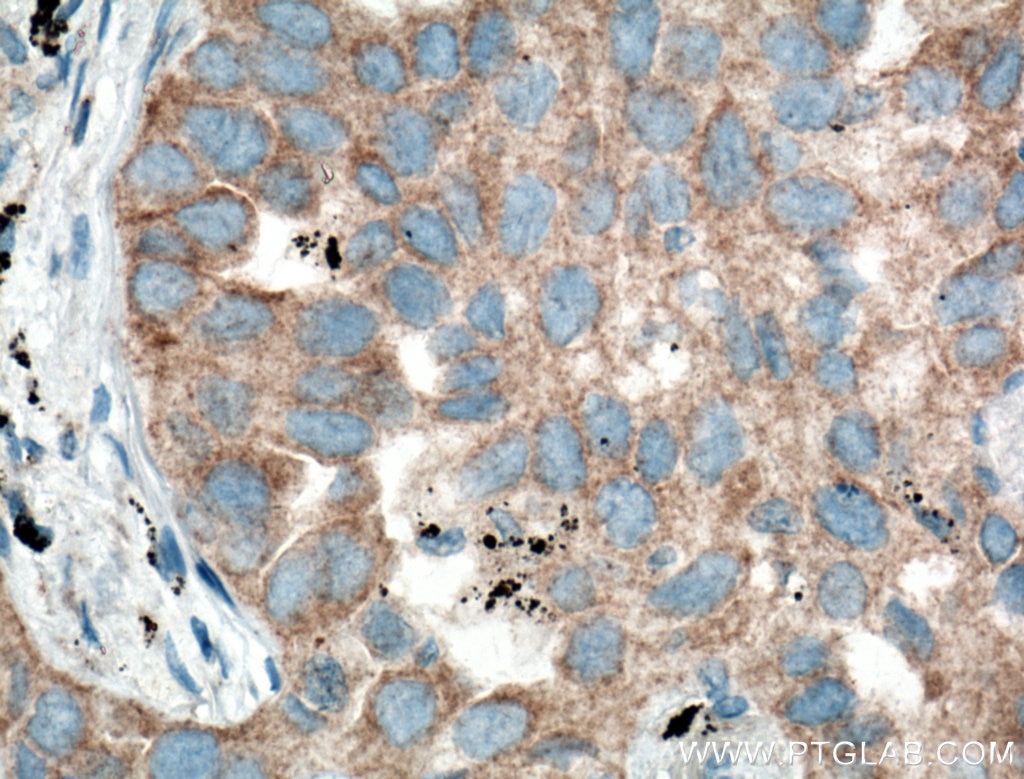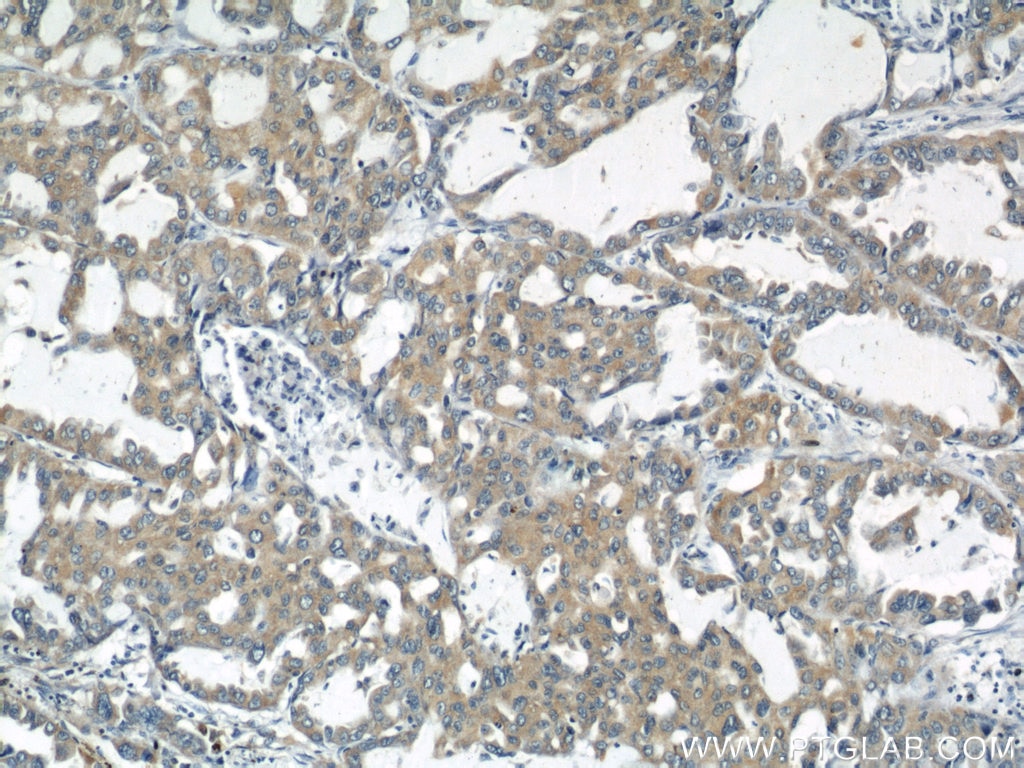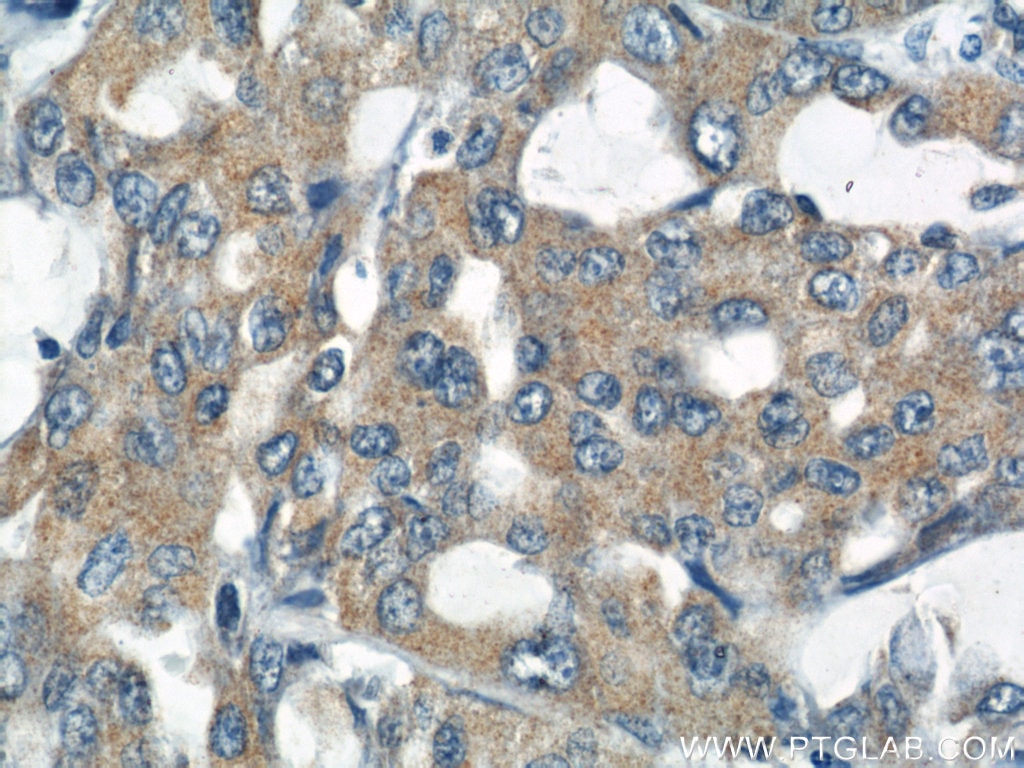- Phare
- Validé par KD/KO
Anticorps Polyclonal de lapin anti-RNF156
RNF156 Polyclonal Antibody for WB, IHC, ELISA
Hôte / Isotype
Lapin / IgG
Réactivité testée
Humain, rat, souris
Applications
WB, IP, IF, IHC, ELISA
Conjugaison
Non conjugué
N° de cat : 11285-1-AP
Synonymes
Galerie de données de validation
Applications testées
| Résultats positifs en WB | cellules HEK-293, cellules HeLa, cellules HepG2, tissu cérébral de souris |
| Résultats positifs en IHC | tissu de cancer du poumon humain, il est suggéré de démasquer l'antigène avec un tampon de TE buffer pH 9.0; (*) À défaut, 'le démasquage de l'antigène peut être 'effectué avec un tampon citrate pH 6,0. |
Dilution recommandée
| Application | Dilution |
|---|---|
| Western Blot (WB) | WB : 1:1000-1:3000 |
| Immunohistochimie (IHC) | IHC : 1:50-1:500 |
| It is recommended that this reagent should be titrated in each testing system to obtain optimal results. | |
| Sample-dependent, check data in validation data gallery | |
Applications publiées
| KD/KO | See 3 publications below |
| WB | See 7 publications below |
| IHC | See 1 publications below |
| IF | See 3 publications below |
| IP | See 1 publications below |
Informations sur le produit
11285-1-AP cible RNF156 dans les applications de WB, IP, IF, IHC, ELISA et montre une réactivité avec des échantillons Humain, rat, souris
| Réactivité | Humain, rat, souris |
| Réactivité citée | Humain, souris |
| Hôte / Isotype | Lapin / IgG |
| Clonalité | Polyclonal |
| Type | Anticorps |
| Immunogène | RNF156 Protéine recombinante Ag1808 |
| Nom complet | mahogunin, ring finger 1 |
| Masse moléculaire calculée | 63 kDa |
| Poids moléculaire observé | 58-64 kDa |
| Numéro d’acquisition GenBank | BC014199 |
| Symbole du gène | MGRN1 |
| Identification du gène (NCBI) | 23295 |
| Conjugaison | Non conjugué |
| Forme | Liquide |
| Méthode de purification | Purification par affinité contre l'antigène |
| Tampon de stockage | PBS avec azoture de sodium à 0,02 % et glycérol à 50 % pH 7,3 |
| Conditions de stockage | Stocker à -20°C. Stable pendant un an après l'expédition. L'aliquotage n'est pas nécessaire pour le stockage à -20oC Les 20ul contiennent 0,1% de BSA. |
Informations générales
MGRN1(E3 ubiquitin-protein ligase) mediates monoubiquitination at multiple sites of TSG101 in the presence of UBE2D1, but not of UBE2G1, nor UBE2H. It also plays a role in the regulation of endosome-to-lysosome trafficking. Human and mouse mahogunin exhibit a similar expression pattern across multiple tissues with particularly high levels in brain(PMID: 12560552). It has 4 isoforms produced by alternative splicing with the molecular mass of 58-64 kDa.
Protocole
| Product Specific Protocols | |
|---|---|
| WB protocol for RNF156 antibody 11285-1-AP | Download protocol |
| IHC protocol for RNF156 antibody 11285-1-AP | Download protocol |
| Standard Protocols | |
|---|---|
| Click here to view our Standard Protocols |
Publications
| Species | Application | Title |
|---|---|---|
Mol Cell Aging Triggers Cytoplasmic Depletion and Nuclear Translocation of the E3 Ligase Mahogunin: A Function for Ubiquitin in Neuronal Survival.
| ||
Dev Cell A Membrane-Tethered Ubiquitination Pathway Regulates Hedgehog Signaling and Heart Development. | ||
Pigment Cell Melanoma Res MGRN1-dependent pigment-type switching requires its ubiquitination activity but not its interaction with TSG101 or NEDD4. | ||
Development Gene-teratogen interactions influence the penetrance of birth defects by altering Hedgehog signaling strength. | ||
Front Oncol Promoter Methylation of the MGRN1 Gene Predicts Prognosis and Response to Chemotherapy of High-Grade Serous Ovarian Cancer Patients. | ||
J Biol Chem Mahoganoid and mahogany mutations rectify the obesity of the yellow mouse by effects on endosomal traffic of MC4R protein.
|
Avis
The reviews below have been submitted by verified Proteintech customers who received an incentive forproviding their feedback.
FH Parijat (Verified Customer) (09-20-2023) | Works well.
|
